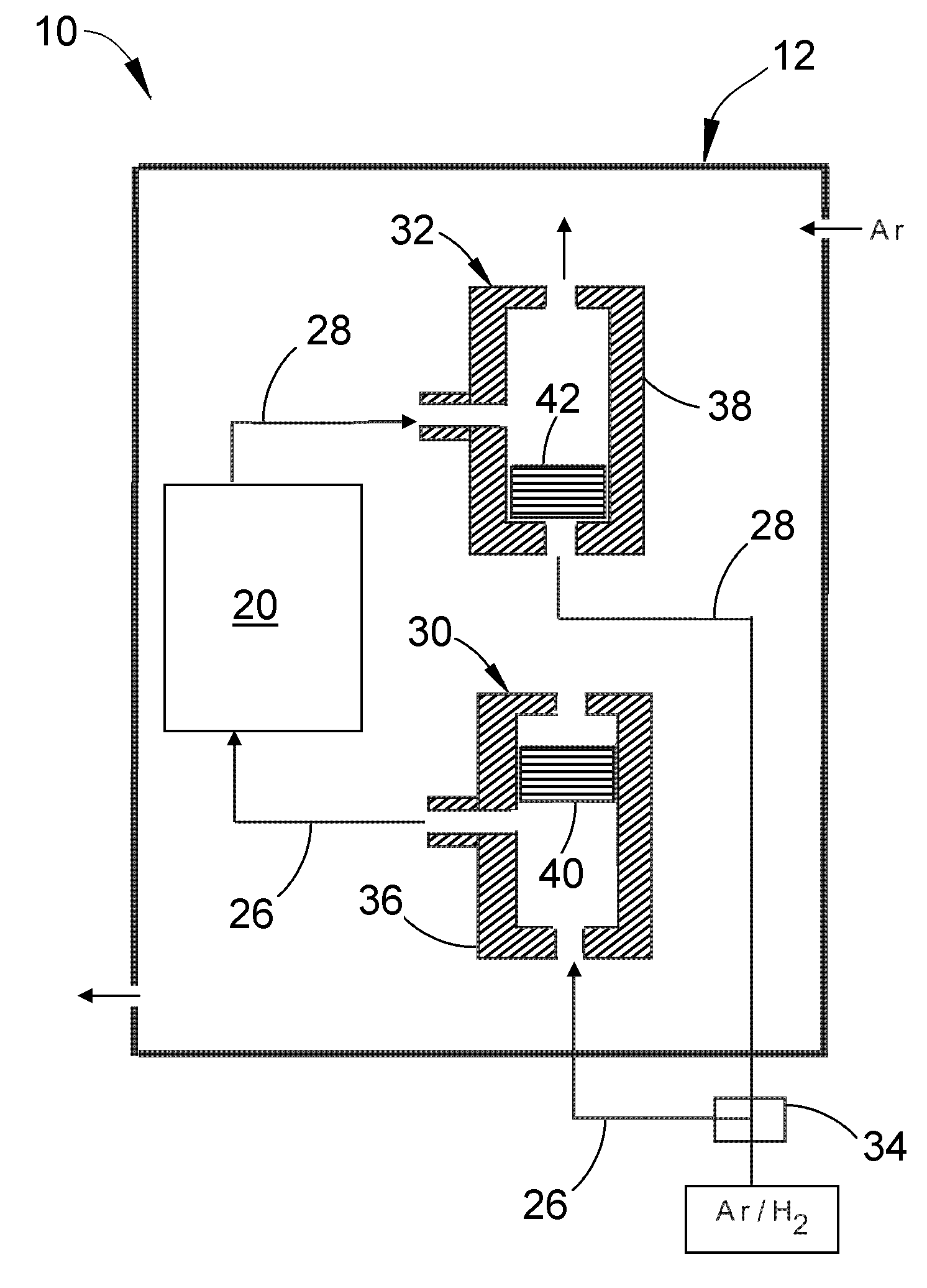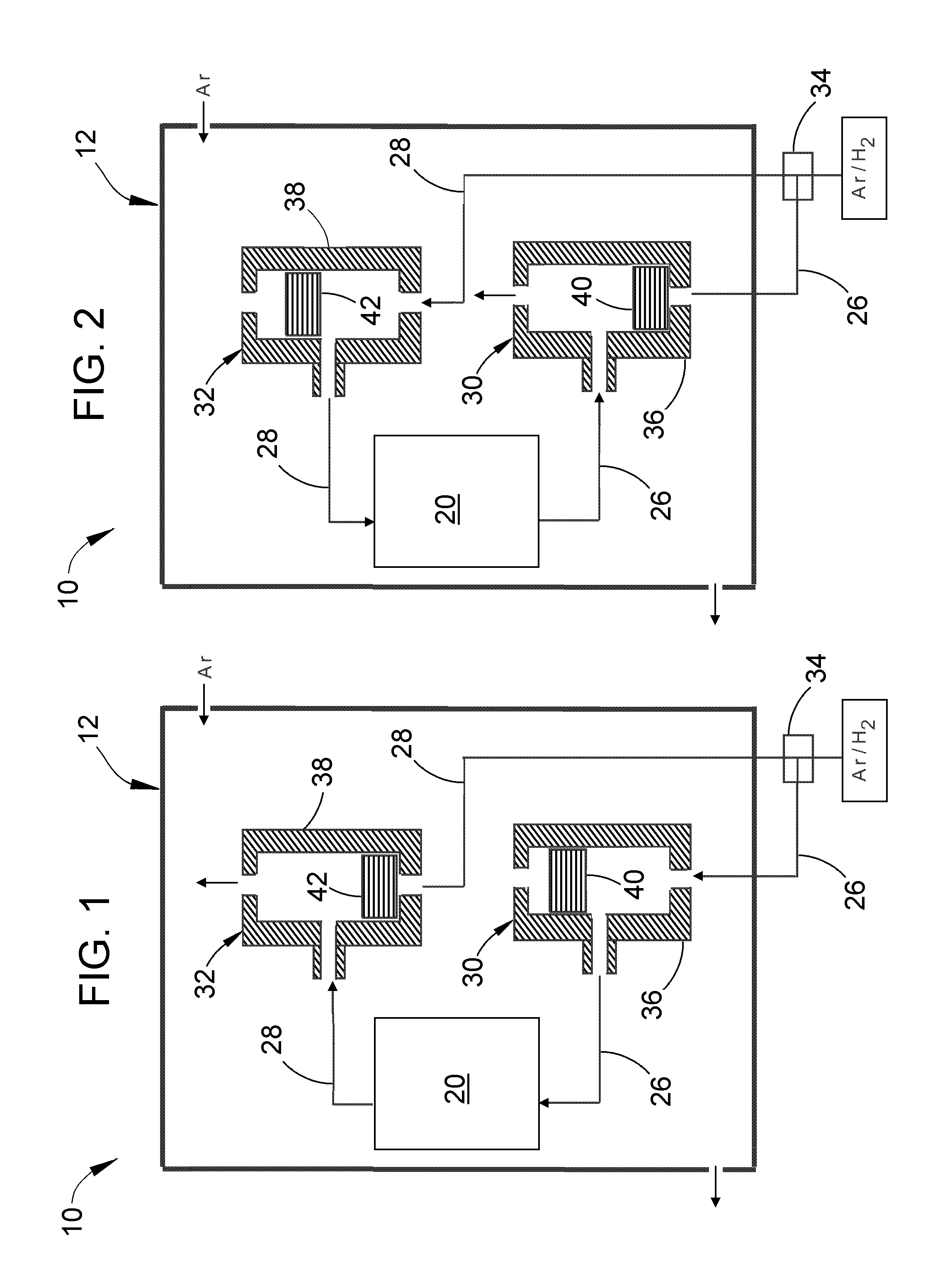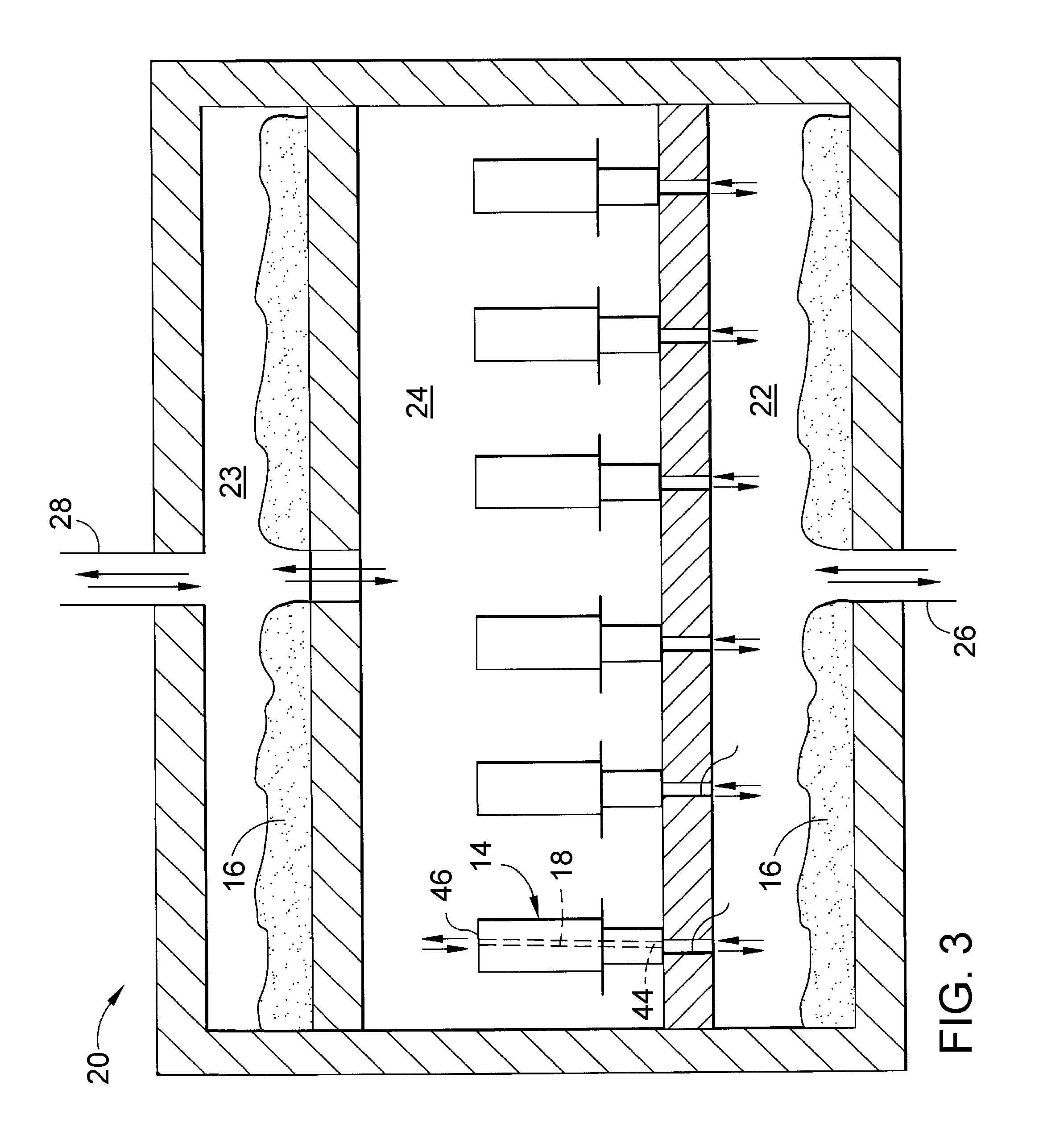Method and apparatus for controlling diffusion coating of internal passages
a diffusion coating and internal passage technology, applied in the direction of solid-state diffusion coating, chemical vapor deposition coating, coating, etc., can solve the problems of thermal and chemical hostile operating environment of gas turbine engines, insufficient mechanical properties, and inability to retain adequate mechanical properties, so as to achieve uniform or better controlled coating thickness
- Summary
- Abstract
- Description
- Claims
- Application Information
AI Technical Summary
Benefits of technology
Problems solved by technology
Method used
Image
Examples
Embodiment Construction
[0015]The present invention is generally applicable to components that operate within thermally and chemically hostile environments, and are therefore subjected to environmental attack such as oxidation and hot corrosion. Notable examples of such components include the high and low pressure turbine nozzles, blades and shrouds of gas turbine engines. While the advantages of this invention will be described with reference to certain gas turbine engine hardware, the teachings of the invention are generally applicable to any component that would benefit from an environmental coating to protect the component from its environment.
[0016]FIGS. 1 and 2 schematically represent a system 10 for controlling the flow of a reactive vapor through internal passages within a component to form a diffusion coating on the internal passages. As depicted, the system 10 includes a retort 12 in which the vapor phase coating process of this invention can be carried out. The retort 12 is schematically represe...
PUM
| Property | Measurement | Unit |
|---|---|---|
| Thickness | aaaaa | aaaaa |
| Flow rate | aaaaa | aaaaa |
| Reactivity | aaaaa | aaaaa |
Abstract
Description
Claims
Application Information
 Login to View More
Login to View More - R&D
- Intellectual Property
- Life Sciences
- Materials
- Tech Scout
- Unparalleled Data Quality
- Higher Quality Content
- 60% Fewer Hallucinations
Browse by: Latest US Patents, China's latest patents, Technical Efficacy Thesaurus, Application Domain, Technology Topic, Popular Technical Reports.
© 2025 PatSnap. All rights reserved.Legal|Privacy policy|Modern Slavery Act Transparency Statement|Sitemap|About US| Contact US: help@patsnap.com



